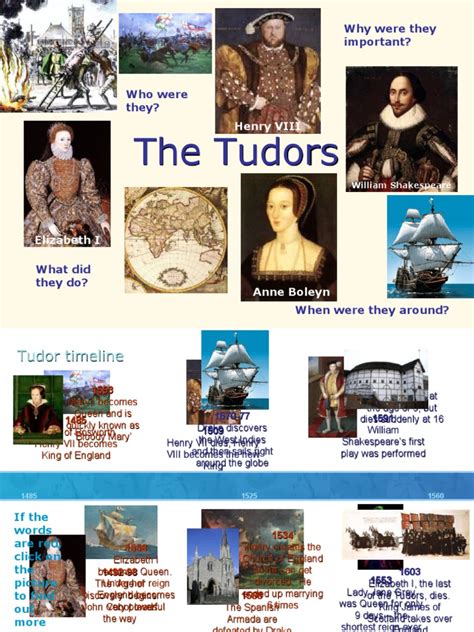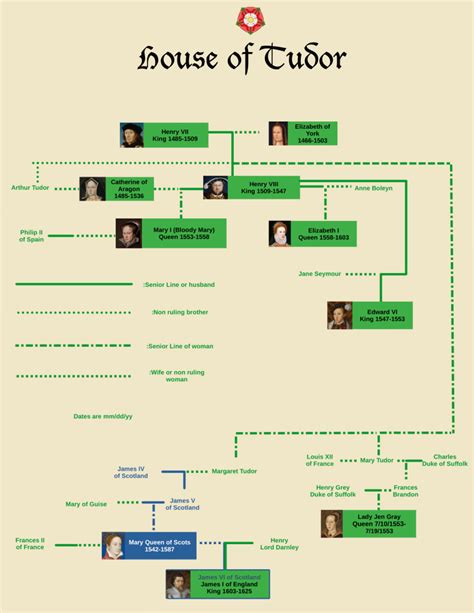tudor meaning | what does tudor mean tudor meaning Tudor architecture is a style of building that originated in medieval England and Wales and was revived in the United States. It features steep gables, half-timbering, stained . Perfume rating 4.07 out of 5 with 5,765 votes. Allure by Chanel is a Floral fragrance for women. Allure was launched in 1996. The nose behind this fragrance is Jacques Polge. Top notes are Lemon, Mandarin Orange, Passionfruit, Peach and Bergamot; middle notes are Honeysuckle, Jasmine, Magnolia, Freesia, Water Lily, Orange Blossom, Peony and .
0 · why were the tudors called
1 · why are the tudors important
2 · who were the tudors called
3 · who are the tudors
4 · what does tudor mean
5 · tudors fact file
6 · tudor in a sentence
7 · how to spell tudor
Equipped initially with the Caliber 1575, it went through several iterations, including “Red” versions in which “Submariner” is printed in red (1969-1975); all-gold versions (1969-1979); yellow gold with blue dial (1971-1979); and “white” versions in which all four lines of dial text are white (1976-1979).
In England and Wales, the Tudor period occurred between 1485 and 1603, including the Elizabethan era during the reign of Elizabeth I (1558–1603). The Tudor period coincides with the dynasty of the House of Tudor in England, which began with the reign of Henry VII. Under the Tudor dynasty, art, architecture, trade, exploration, and commerce flourished. Historian John Guy (1988) argue.

chanel boy screws
The Tudors were Welsh-born rulers of England from 1485 to 1603, including Henry VIII and Elizabeth I. They rose to power after the Wars of the Roses and shaped the English .The House of Tudor was an English and Welsh dynasty that held the throne of England from 1485 to 1603. They descended from the Tudors of Penmynydd, a Welsh noble family, and Catherine of Valois. The Tudor monarchs ruled the Kingdom of England and the Lordship of Ireland (later the Kingdom of Ireland) for 118 years with five monarchs: Henry VII, Henry VIII, Edward VI, Mary I and Elizabeth I Learn about the Tudor dynasty that ruled England from 1485 to 1603 CE. Explore the lives and achievements of Henry VII, Henry VIII, Edward VI, Mary I, Elizabeth I and more.

why were the tudors called
Tudor architecture is a style of building that originated in medieval England and Wales and was revived in the United States. It features steep gables, half-timbering, stained .Learn about the Tudor period (1485–1603) in England, when three generations of monarchs shaped the country's history, religion and culture. Explore the reigns of Henry VIII, Edward VI, .
Learn about the Tudors, the most famous and influential English monarchs of the 16th century. Discover their achievements, challenges, and legacy in this article by Richard Rex.Tudor style is a type of British architecture that combined Renaissance and Gothic elements from 1485 to 1558. It is associated with the Tudor monarchs, such as Henry VIII and Elizabeth I, .Tudor can refer to a royal family that ruled England from 1485 to 1603, a style of architecture, or a person with the name. Learn more about the meaning, usage, and origin of Tudor with .TUDOR meaning: relating to the period of British history from 1485 to 1603
why are the tudors important
who were the tudors called
Tudor England began when Henry VII became king in 1485 following the Battle of Bosworth and the death of Richard III. There were five Tudor monarchs, not counting Lady Jane Grey who ruled for just nine days. The monarchs were, in order, Henry VII (ruled from 1485 to 1509), his son Henry VIII (ruled from 1509 to 1547), Edward VI, son of Henry .

American Tudor Revival: Tudor Revival architecture is an extension of the Tudor homes found in England during the 15th and 16th centuries, which migrated to the United States in the late 1890s and early 1900s. This type of home features a brick exterior accented with timber, a large gable on a shingled roof, and traditional mullioned windows.
Culture Tudor is the name used for the style of architecture common during the 16th century in England. A characteristic feature of Tudor buildings is the use of black wooden frames surrounding white outer walls. see also half-timbered
The Tudor architectural style is the final development of medieval architecture in England and Wales, during the Tudor period (1485–1603) . The poorest classes lived in hovels, a building with a slightly different definition than today: it was a one-room wattle-and-daub hut. Most did not have the copyhold on the land they occupied and were .Tudor most commonly refers to: House of Tudor, Welsh and English royal house of Welsh origins Tudor period, a historical era in England and Wales coinciding with the rule of the Tudor dynasty; Tudor may also refer to: Architecture.The characteristic exterior features of the Tudor style as used in secular architecture are: a lavish use of half-timber work; large groups of rectangular windows; rich oriel, or bay, windows; complex roofs with many gables; interesting and sometimes fantastic chimney treatments; and much brickwork, frequently in patterns. The interiors of secular buildings featured richly wood .Definition of 'Tudor' Tudor in American English 1 (ˈtudər; ˈtjudər) noun. 1. name of the ruling family of England (1485-1603), descended from Owen Tudor. adjective. 2. designating or of a style of architecture popular under the Tudors: it is characterized by slightly rounded arches, shallow moldings, extensive paneling, etc.
Tudor synonyms, Tudor pronunciation, Tudor translation, English dictionary definition of Tudor. English ruling dynasty , including Henry VII and his descendants Henry VIII, Edward VI, Mary I, and Elizabeth I. adj. 1. Tudor. (adj.). by 1753 in reference to the English royal family 1485-1603, from Welsh surname Tewdwr, used of the line of English sovereigns from Henry VII to Elizabeth I, descended from Owen Tudor, who married Catherine of France, widowed queen of Henry V.The name is the Welsh form of Theodore.Applied by 1806 to a style of architecture prevalent during .
Tudor definition: Of or relating to the royal house of Tudor. In the following year James was in correspondence with Perkin, then in Ireland; in 1495 he received that pretendant, married him to a daughter of Huntly, and in 1496 raided northern England in his company, - all this in contempt of the offered hand of a Tudor princess. In Tudor times, however, “there was as much importance placed on the impact, though temporary and transient, that a breathtaking event could make. It goes into memory, even if it itself .
End of the Tudor Dynasty . None of Henry VIII’s children had any lasting offspring of their own, and when Elizabeth I died, she was the last of the Tudor monarchs; she was followed by James Stuart from Scotland, the first of the Stuart dynasty and a descendant of Henry VIII’s eldest sister, Margaret. The Tudors passed into history.Dictionary entry overview: What does Tudor mean? • TUDOR (noun) The noun TUDOR has 3 senses:. 1. an English dynasty descended from Henry Tudor; Tudor monarchs ruled from Henry VII to Elizabeth I (from 1485 to 1603) 2. United States dancer and choreographer (born in England) (1909-1987) 3. a member of the dynasty that ruled England Familiarity information: .The meaning of TUDOR is of or relating to the English royal house that ruled from 1485 to 1603. How to use Tudor in a sentence.
In England and Wales, the Tudor period occurred between 1485 and 1603, including the Elizabethan era during the reign of Elizabeth I (1558–1603). The Tudor period coincides with the dynasty of the House of Tudor in England, which began with the reign of Henry VII.
who are the tudors
House of Tudor, an English royal dynasty of Welsh origin, which gave five sovereigns to England: Henry VII (reigned 1485–1509); his son, Henry VIII (1509–47); followed by Henry VIII’s three children, Edward VI (1547–53), Mary I (1553–58), and Elizabeth I (1558–1603).The House of Tudor (/ ˈ tj uː d ər / TEW-dər) [1] was an English and Welsh dynasty that held the throne of England from 1485 to 1603. [2] They descended from the Tudors of Penmynydd, a Welsh noble family, and Catherine of Valois. The House of Tudor ruled England from 1485 to 1603 CE. The period is seen as a Golden Age of English history when strong-willed monarchs made lasting contributions to the nation's history, strutted around in flamboyant clothes and gave endless material for historians and fiction writers ever-after. The period had its darker side with the . Tudor architecture is a stately and historical architectural style that developed in medieval England and Wales and reached its distinct look during the 16th-century Tudor period. A traditional Tudor-style home features a façade with white stucco exteriors punctuated with decorative half-timbering or a dark brick-and-stone construction.
The Tudor period saw the gradual evolution of England’s medieval army into a larger, firearm-wielding force supported by powerful ships and formidable gun forts.
The Tudors, image and reality, a history of Tudor England. Richard Rex. 10 min read. The Tudors remain among the most instantly recognisable of England’s monarchs. There is no mistaking Henry VIII in the great Holbein portrait of which so many copies survive.Tudor style, type of British architecture, mainly domestic, that grafted Renaissance decorative elements onto the Perpendicular Gothic style between 1485 and 1558.
what does tudor mean
Rolex Submariner Date References. Below is a list of the different Rolex Submariner Date watches, their movements, and approximate years of production. Ref. 1680 – (1969-1979): Cal. 1575. Ref. 1680/8 – (1969 .
tudor meaning|what does tudor mean



























